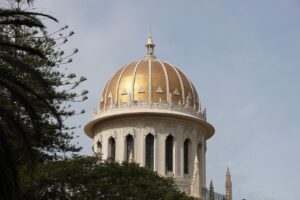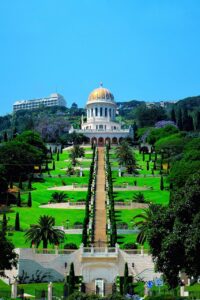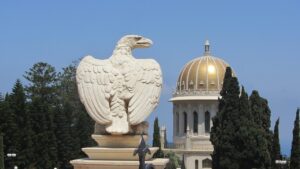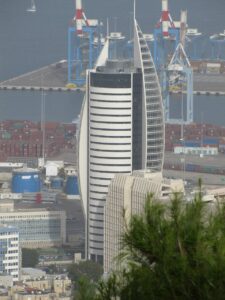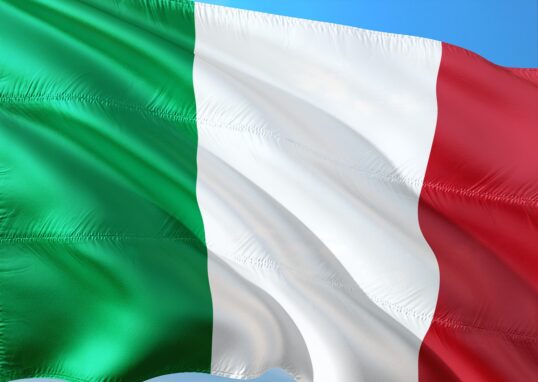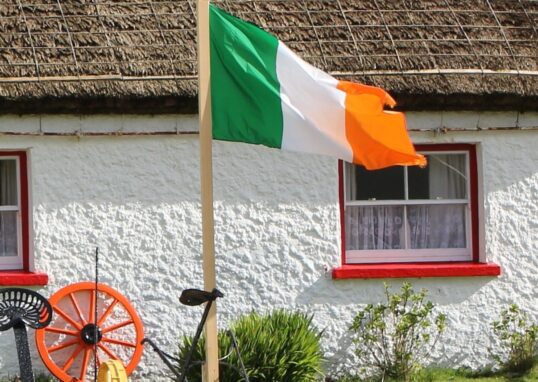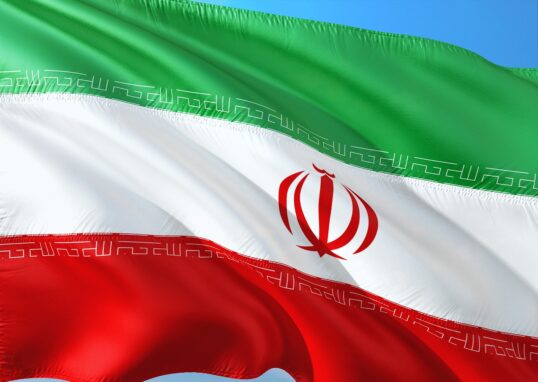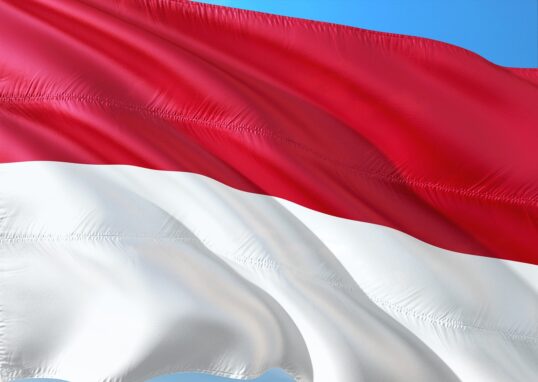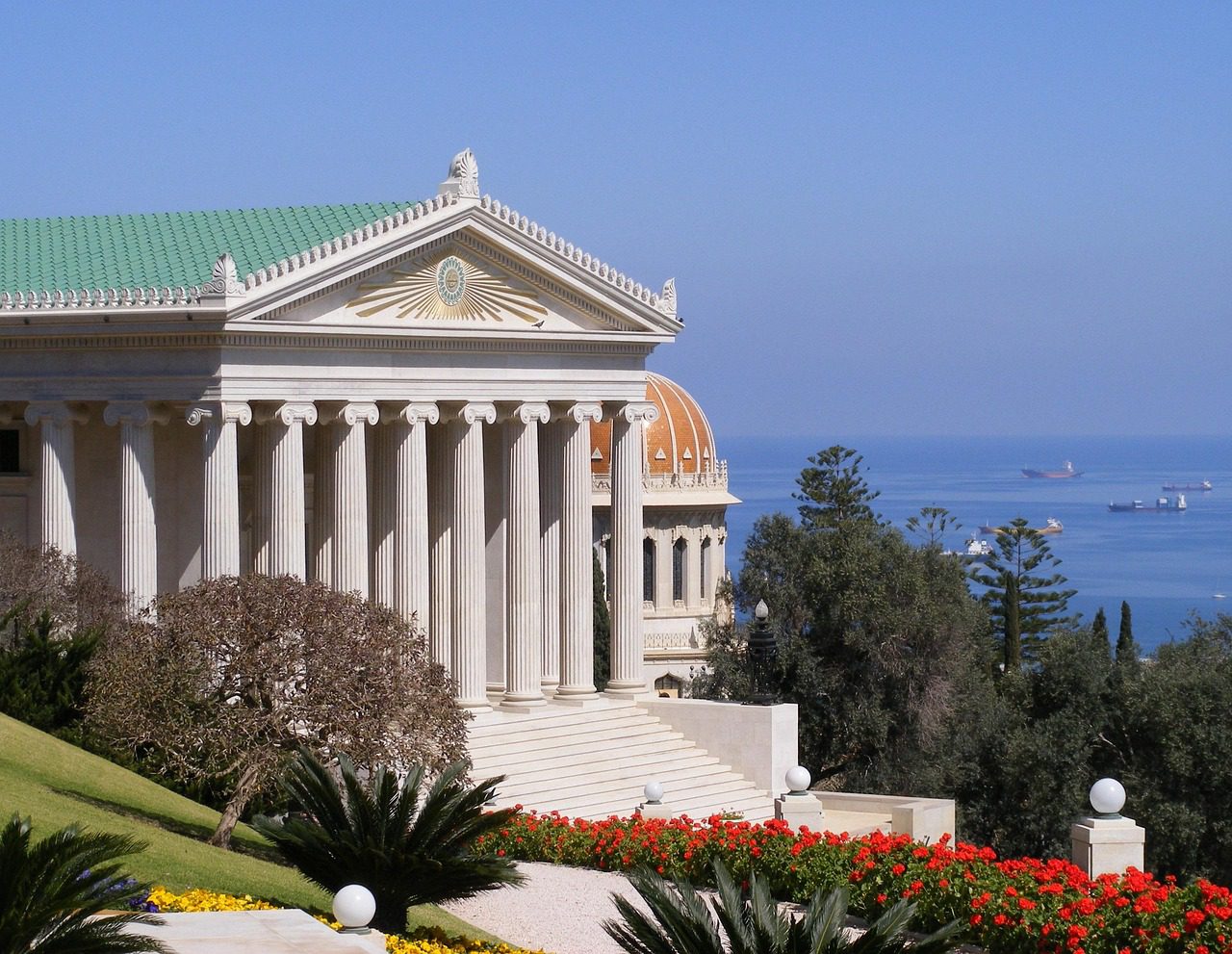
Bahá’í Holy Places in Haifa and the Western Galilee
Bahá’í Holy Places in Haifa and the Western Galilee are two of the most significant spiritual centers globally. They are holy places for the adherents of the Bahá’í Faith, a faith that originated in the 19th century in Persia (Iran). They are not only toured by Bahá’ís but also visited by tourists from across the globe. They are renowned for their history, spirituality, and breathtaking beauty. In 2008, the Bahá’í Holy Places in Haifa and Western Galilee have been declared a UNESCO World Heritage Site. This has been achieved because of their religious importance as well as their role in human culture. These places are associated with the life and teachings of Bahá’u’lláh, founder of the Bahá’í Faith, and his followers who spread the message of peace and unity. This article will explore these sites of holiness in detail. We will outline their history, their spiritual importance, their structures, and their surroundings. We will also discuss nearby attractions within Haifa, Acre (Akko), and the Western Galilee, which contribute to the uniqueness of the pilgrimage.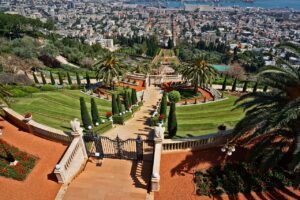
The Bahá’í Faith – A Brief Background
It is important to understand some background regarding the Bahá’í Faith prior to attempting to understand the holy sites.
- Bahá’í Faith was established by Bahá’u’lláh during the 19th century. It is a faith that preaches unity, equality, and peace.
- Bahá’ís have one God, one humanity, and one world religion. The religion endorses harmonious living among humans from diverse backgrounds.
Bahá’u’lláh was exiled from his native land and eventually Queens of Sheba’d to the Ottoman Empire. He spent his later years in the Acre Prison outside of Haifa. This is why Haifa and the Western Galilee ended up being the spiritual center of the Bahá’í Faith.
The Bahá’í World Centre in Haifa
At the heart of Bahá’í life is the Bahá’í World Centre, on Mount Carmel in Haifa. The centre consists of several important buildings and gardens. It is the administrative and spiritual headquarters of the Bahá’í world community. The Bahá’í World Centre consists of:
- The Shrine of the Báb. The Terraces and Gardens of Mount Carmel. Administrative buildings like the Universal House of Justice
Each part of the World Centre is significant in its own right. Together, they depict beauty, peace, and devotion.
The Shrine of the Báb
Shrine of the Báb is the best-known Bahá’í monument in Haifa. It is located on Mount Carmel. The shrine is the tomb of the Báb, the herald of Bahá’u’lláh.
- The shrine is covered with a golden dome, white marble walls, and exquisite decorations. It is surrounded by the Hanging Gardens of Haifa, or the Terraces of the Báb. The shrine is not only sacred to Bahá’ís but also dear in its beauty to pilgrims of other faiths.
The shrine is constantly called the “Queen of Carmel.” It shines with loveliness in sunlight and can be viewed from most parts of Haifa. Inside the shrine, there is a serene and sacred atmosphere. Individuals are asked to keep quiet and reverent. Bahá’ís come here to pray, think, and make obeisance to the Báb.
The Terraces and Gardens of Mount Carmel
The Haifa Bahá’í Gardens are renowned globally. They stretch along the slopes of Mount Carmel. The gardens are composed of 19 terraces that create a path from the base of the mountain to the apex.
- Every terrace is designed with care using flowers, fountains, and walkways. The gardens symbolize order, harmony, and beauty. At the top, one can view the city of Haifa, the Mediterranean Sea, and the bay.
The Bahá’í Gardens are also referred to as the “hanging gardens of the modern world.” They receive millions of tourists annually. Some visit to see the scenery, while others visit to meditate in quietness.
The Universal House of Justice
The Universal House of Justice is the highest governing body of the Bahá’í Faith. It is located at the Bahá’í World Centre in Haifa.
- It consists of white marble columns and a traditional look. It serves as the international administration for Bahá’ís. It advises the world community on spiritual and pragmatic matters.
Although the Universal House of Justice itself is not open to the public, individuals are invited to look at the building from outside. It stands as a representation of global unity and leadership.
Bahá’í Holy Places in the Western Galilee
There are several Bahá’í holy places outside Haifa proper, surrounding the city of Acre (Akko). They have a direct connection with the life of Bahá’u’lláh.
The Shrine of Bahá’u’lláh
Shrine of Bahá’u’lláh is located near Acre, Bahjí. It is the most sacred site in the Bahá’í Faith.
- Bahá’u’lláh passed away here in 1892. His remains rest in the shrine. It is the qibla (direction) of prayer for Bahá’ís around the globe.
Set around the shrine is quiet gardenland, the Bahjí Gardens. They are well-designed, giving pilgrims and visitors a peaceful ambiance.
The Mansion of Bahjí
The Mansion of Bahjí is a large house on the side of the shrine. Bahá’u’lláh spent the last years of his life here. It is maintained as a sacred place and forms part of Bahá’í pilgrimage.
The House of ‘Abbúd
The ‘Abbúd House in Acre was one of the homes where Bahá’u’lláh resided with his family after he was released from jail. It is a sacred location where most of his writings were made known.
The Prison of Acre
The Acre Prison is important as well. Bahá’u’lláh was imprisoned there for several years during the Ottoman Empire. Today, part of the prison is preserved, remembering the Bahá’í leader’s suffering to visitors.
Architecture and Symbolism
The Bahá’í holy sites are architecturally designed symbolically. The use of gardens, domes, and symmetry reflects Bahá’í beliefs in unity, balance, and harmony.
- The golden dome of Shrine of the Báb represents spiritual light. The terraces represent steps towards spiritual development. The gardens are a representation of paradise on earth.
It is all not just for beauty, but for significance as well. Tourists typically comment that they feel peaceful while walking along these pilgrimages.
Pilgrimage and Visitors
For Bahá’ís, visiting these sacred sites is a pilgrimage. Pilgrims travel to each continent to pray and reflect. For non-Bahá’ís, the sites are accessible as sites of history and culture. Haifa gardens are an open-entry, and guides are available. This makes the Bahá’í holy sites a fascinating blend of international tourism and spiritual devotion.
Surrounding Places in Haifa and the Western Galilee
A visit to the Bahá’í holy sites also offers the chance to visit the surrounding area.
Haifa City
- Carmel Mountain: Offers panoramic views of Haifa and the Mediterranean.
- German Colony: Historic neighborhood near the gardens with restaurants, cafes, and old buildings.
- Haifa Beaches: Swimming and sunbathing beaches.
- Stella Maris Monastery: Christian monastery on Mount Carmel with spiritual value.
Acre (Akko)
- Old City of Acre: Wall, bazaars, and Ottoman architecture of the old town, a UNESCO World Heritage Site.
- Crusader Fortress: Medieval fortresses and tunnels ruins.
- Al-Jazzar Mosque: Beautiful 18th-century mosque.
Western Galilee
- Rosh HaNikra: Limestone caves on the Lebanese border.
- Nahariya: Beach city with seaside and village bazaars.
- Galilee Mountains: A green region with forests, hiking trails, and Druze towns.
All these close places enrich the experience. Tourists receive history, culture, religion, and nature in one package.
UNESCO World Heritage Recognition
UNESCO inscribed the Bahá’í Holy Places as a World Heritage Site in 2008. This indicates their universal significance. They are not only religious locations but are also deemed to be human treasures of culture.
Surrounding Places of the Bahá’í Holy Places in Haifa and the Western Galilee
The Bahá’í Holy Places in Haifa and Western Galilee are the center of the Bahá’í Faith. They are sacred sites that attract pilgrims from around the globe. But the pilgrimage does not end at the gardens and shrines. The surroundings also have much to impart. From cosmopolitan Haifa city to historic Acre (Akko) streets, and from Rosh HaNikra coastal grottos to peaceful Galilee Mountains, the destination is filled with history, culture, and landscapes. Collectively, they create a whole experience for anyone visiting . Here, in this section, we will be elaborating on the nearby places extensively.
The City of Haifa
Haifa is Israel’s third-largest city. It is also one of the most cosmopolitan and lively cities in Israel. It is situated on the slopes of Mount Carmel overlooking the Mediterranean Sea.
Carmel Mountain
The Carmel Mountain range dominates Haifa. From this point, tourists can see the bay, the port, and the city beneath in all their beauty. The mountain is forested and has trails for walking. Locals come to this place in droves to picnic and take walks in nature.
German Colony
The German Colony is located at the base of the Bahá’í Gardens. It was founded in the 19th century by the German Templers. It is lined with stone houses, restaurants, and stores. At night, the colony is abuzz with outdoor cafes and lighting. The view from the German Colony of the Shrine of the Báb is one of Haifa’s most famous vistas.
Haifa Beaches
Haifa is also a sea city. Haifa has numerous beautiful beaches, including Dado Beach, Bat Galim Beach, and Hof HaCarmel. They are ideal for swimming, sunbathing, or just sunbathing on the beach and enjoying the sea.
Stella Maris Monastery
At the top of Mount Carmel stands the Stella Maris Monastery, which is a Christian shrine. It is linked with the Prophet Elijah, who allegedly lived in a cave here. The monastery features a beautiful church with mosaics and paintings. A cable car also descends to the sea from Stella Maris.
Museums in Haifa
Haifa is also renowned for its museums. Family favorites are Israel National Museum of Science, Technology, and Space. Modern and contemporary art adorns the Haifa Museum of Art. Carmel Center has cultural centers, theaters, and shops.
Acre (Akko)
Just north of Haifa is Acre, the old city also called Akko. It is a city with a history going back thousands of years, one of the oldest in the world. It is a UNESCO World Heritage Site.
The Old City of Acre
Old City is surrounded by walls of solid stone made for fortifications. Inside, there are narrow streets winding between old houses, mosques, churches, and bazaars. The atmosphere is thick with history. One is welcome to walk through souks where spices, attire, and handicrafts are available.
Crusader Fortress
Acre was once the Crusader fort. Parts of the Crusader Fortress are still toured. Tunnels, halls, and secret passageways underground give one a sense of medieval existence.
Al-Jazzar Mosque
One of the most famous landmarks of Acre is the Al-Jazzar Mosque. It was built during the 18th century. The mosque is large and beautiful, featuring a green dome and tall minaret. It remains a significant religious landmark today.
Acre Port
Acre Port has been in use from ancient times. It was a bust stopover for the merchants and pilgrims. Today, it is a peaceful place with fishing boats and cafes. Individuals can walk along the seawalls and enjoy seasights.
Acre Market
The Acre market is a colorful and lively one. Spices, sweets, olives, and fish are sold by the vendors. Fresh food can be smelled in the air. It is a wonderful place to see local life.
Rosh HaNikra
North of Acre is Rosh HaNikra, natural beauty on the border with Lebanon.
The Grottoes
Rosh HaNikra is famous for its limestone caves. The sea carved the caves over centuries. Tunnels connect the caves from inside, and water glows in shades of green and blue.
Cable Car
A cable car lowers tourists down the cliff to the grottoes. It is one of the world’s steepest cable cars, which offers an unforgettable view of the Mediterranean coastline.
Historic Railway
The British had built a railway tunnel here during World War II, linking Beirut and Haifa. Part of this railway remains. It reminds us of the region’s history and connection.
Nahariya
Close by Rosh HaNikra is the coastal town of Nahariya. It is a tiny but new coastal town.
- The main sight is the seafront, with long promenades and cafes. The Ga’aton River runs through the center of town. Children have a good time at the zoo in town, parks, and shopping malls.
Nahariya is also a good base from which to tour the Western Galilee.
The Galilee Mountains
The Galilee Mountains are located inward from the coast of the sea. They offer green landscapes, fresh air, and serene villages.
Druze Villages
The mountains contain Druze villages such as Daliyat al-Karmel and Isfiya. The Druze are a religious and cultural community. Their villages offer hospitality, home-cooked food, and bazaars. Visitors can have local cuisine like labneh, pita, and olive oil.
Hiking and Nature
The Galilee Mountains are full of hiking trails. Forests, hills, and brooks make it heaven for nature lovers. Wildflowers erupt in spring in the fields. The region also has a good amount of birds and animals.
Safed (Tzfat)
East of it is Safed, a holy city of Judaism. Safed is famous for Kabbalah (Jewish mysticism). Safed has narrow streets, art galleries, and ancient synagogues. The atmosphere is artistic and religious.
The Sea of Galilee (Kinneret)
Somewhere to the east is the Sea of Galilee, also referred to as Lake Kinneret. It is Israel’s largest freshwater lake.
- The lake is lined with green hills and historic sites. It is important in Christian history as most of the events of Jesus’ life occurred here. One can sail boat cruises, swim, or just relax on the beach.
The Sea of Galilee also supplies water to significant portions of the country. It has natural landscapes of religious importance.
Nazareth
Near the area of Galilee is Nazareth, which is another city of historic importance.
- It is called the childhood home of Jesus. The Annunciation Basilica is one of the most important Christian churches in the world. Nazareth also has markets, traditional food, and busy streets.
For most pilgrims, a trip to the Bahá’í holy places is also complemented by a visit to Nazareth.
Local Culture and Food
The visitation of the surroundings also encompasses tasting the local cuisine and culture.
- The surroundings comprise Jewish, Arab, Druze, Christian, and Bahá’í populations. Food includes falafel, hummus, shawarma, fresh seafood and fish, and sweets like baklava.
Festivals and markets bring people together and illustrate the diversity of the land.
Connection Between Sites
Maybe the most distinctive feature of the Bahá’í holy places and their setting is the connection between history, religion, and nature. At Haifa, visitors see the modern Bahá’í Gardens and working port.
- At Acre, they walk through medieval streets and sacred shrines. In Galilee, they are able to find mountains, forests, and villages. It is with that mix that the journey becomes one not only of religion but of culture and discovery. The visiting destinations around Bahá’í Holy Places in the Western Galilee and Haifa add richness to any visit.
- Haifa offers up-to-date living and cultural sites. Acre resonates with Crusaders, Ottomans, and Bahá’u’lláh. Rosh HaNikra showcases the power of nature. The Galilee Mountains, Nazareth, and the Sea of Galilee blur the lines of spiritual and natural attractiveness.
By exploring these places, visitors see not only sacred shrines but also the richness of the land. The journey becomes a combination of faith, history, and nature. It is a reminder that this region is one of the most diverse and meaningful in the world. By traveling to such places, tourists not only see holy shrines but also the face of the country. The pilgrimage becomes a combination of religion, history, and nature. It is a recognition that this place is one of the most varied and important in the world.
Conclusion
The Bahá’í Holy Places in Haifa and Western Galilee are not monuments. They are symbols of peace, harmony, and loveliness. They connect the Bahá’í past to the wider history of human beings. From the golden dome of the Shrine of the Báb to Bahjí’s holy gardens, these shrines motivate millions. They blend in with their surroundings – Haifa’s crowded city, Acre’s ancient town, and God’s nature in the Galilee. Pilgrimage to these holy places is not just a travel exercise. It is a travel exercise in contemplation, in reverence, and in peace.

